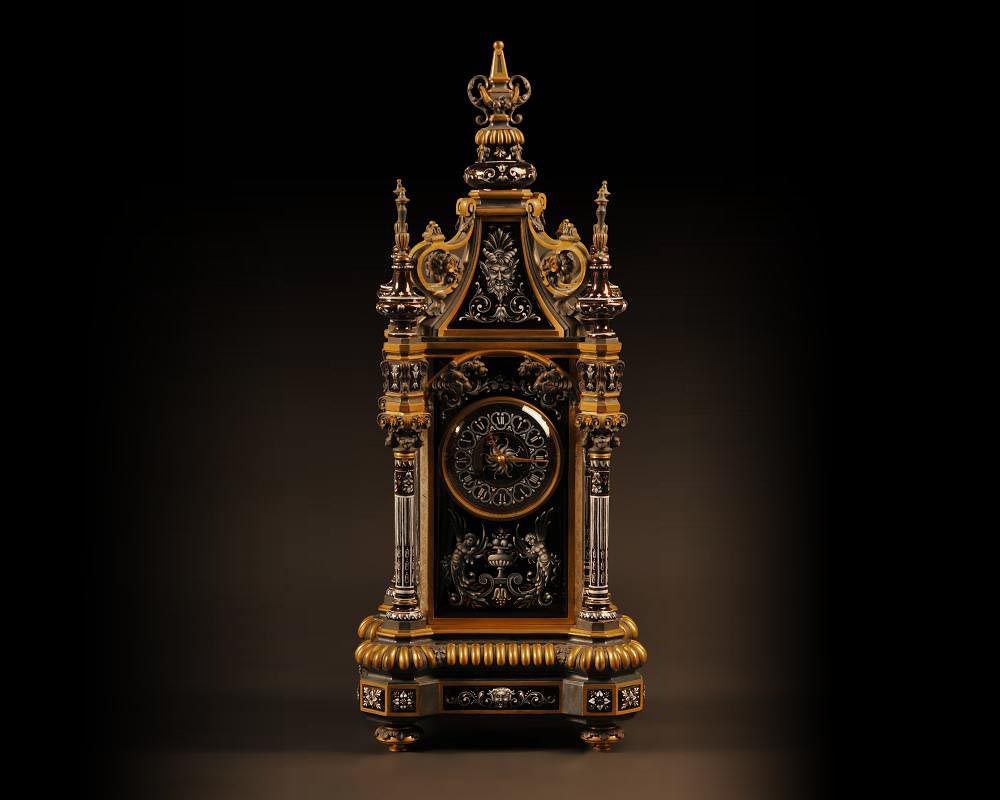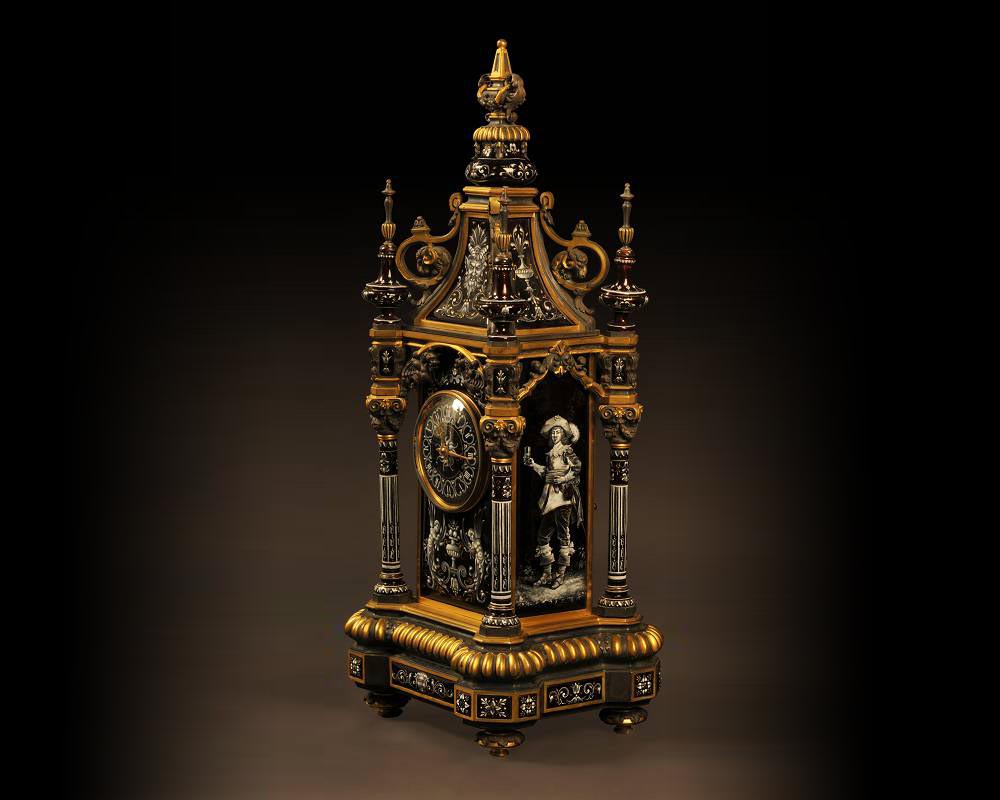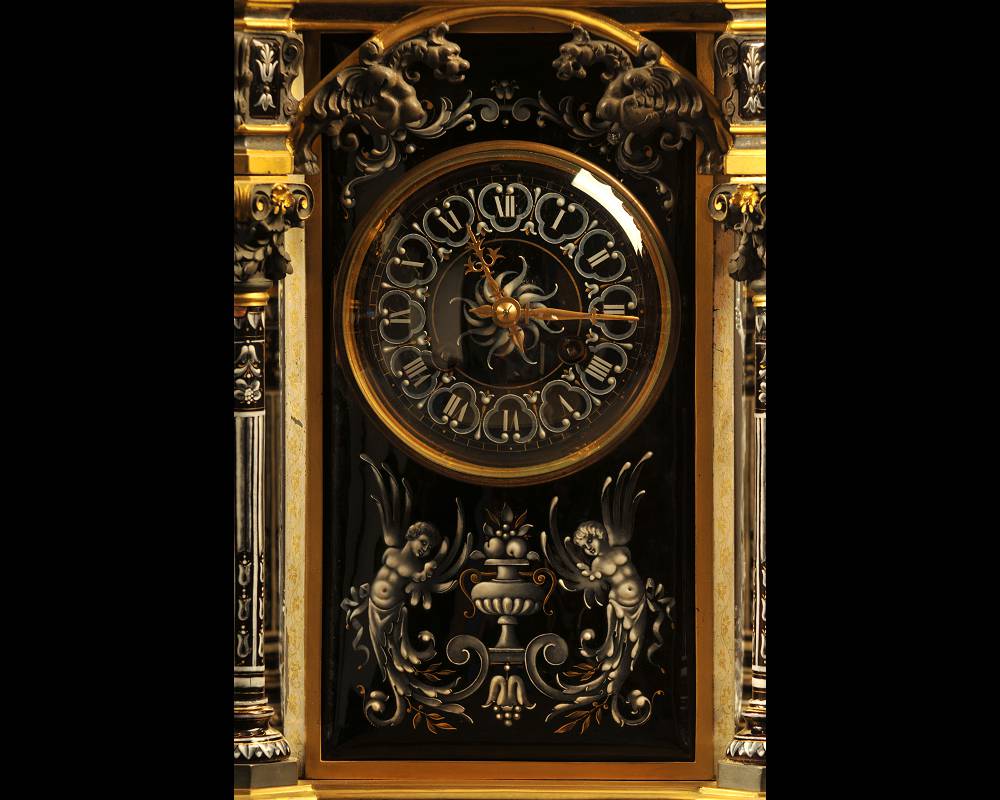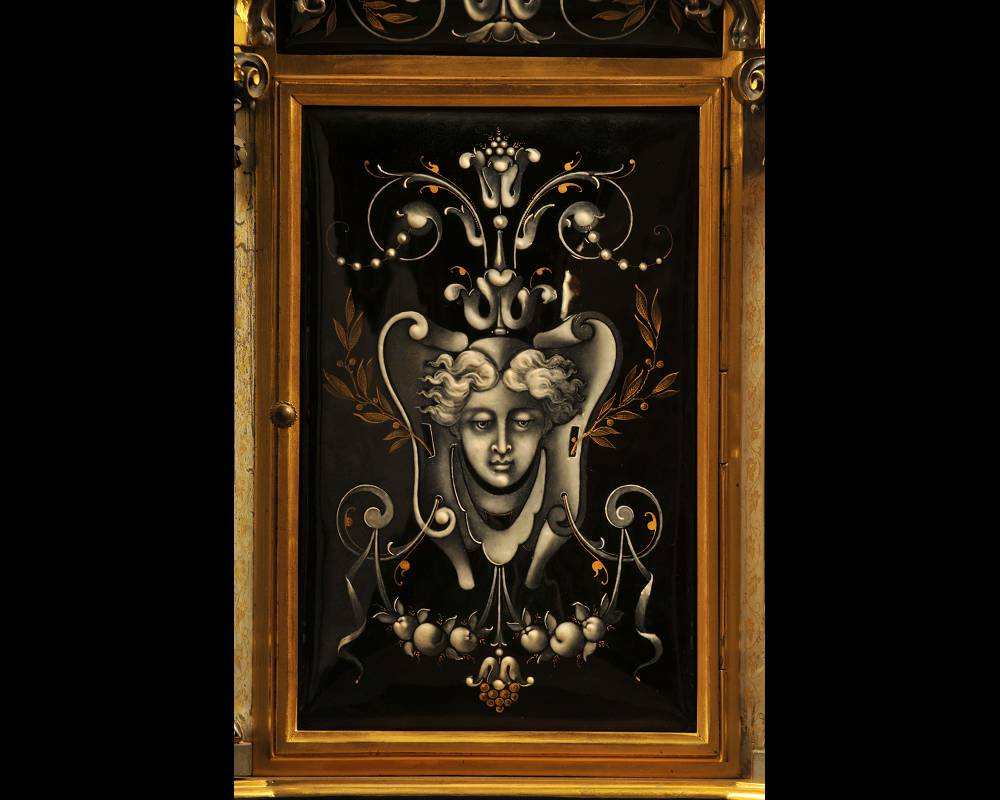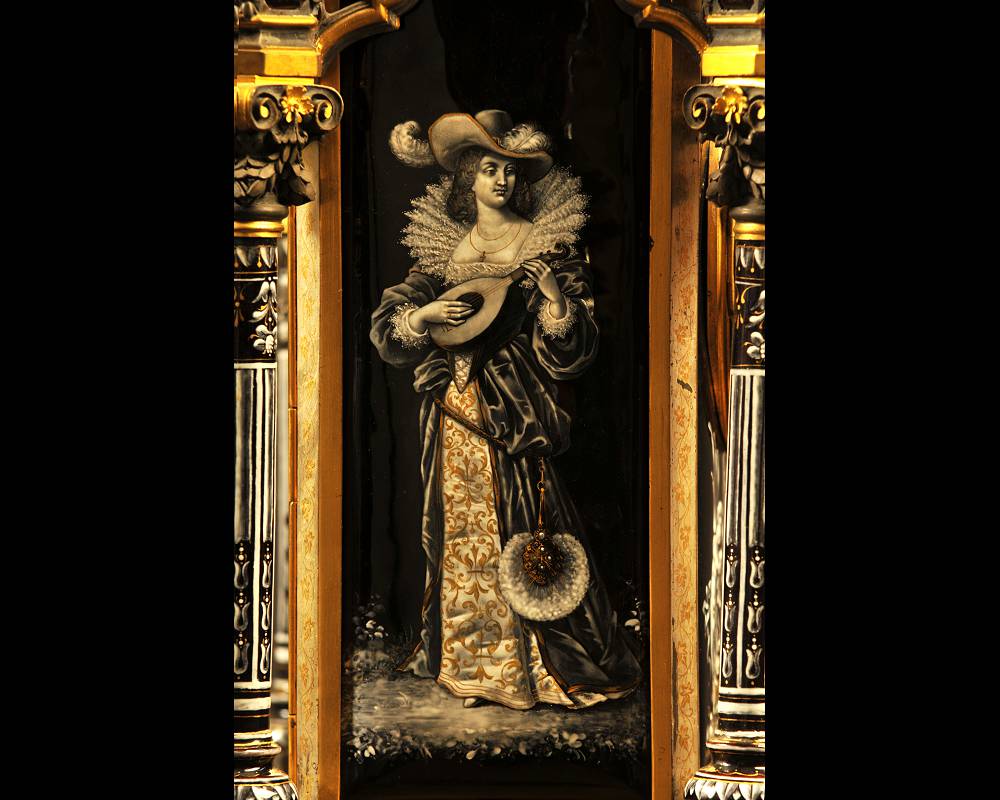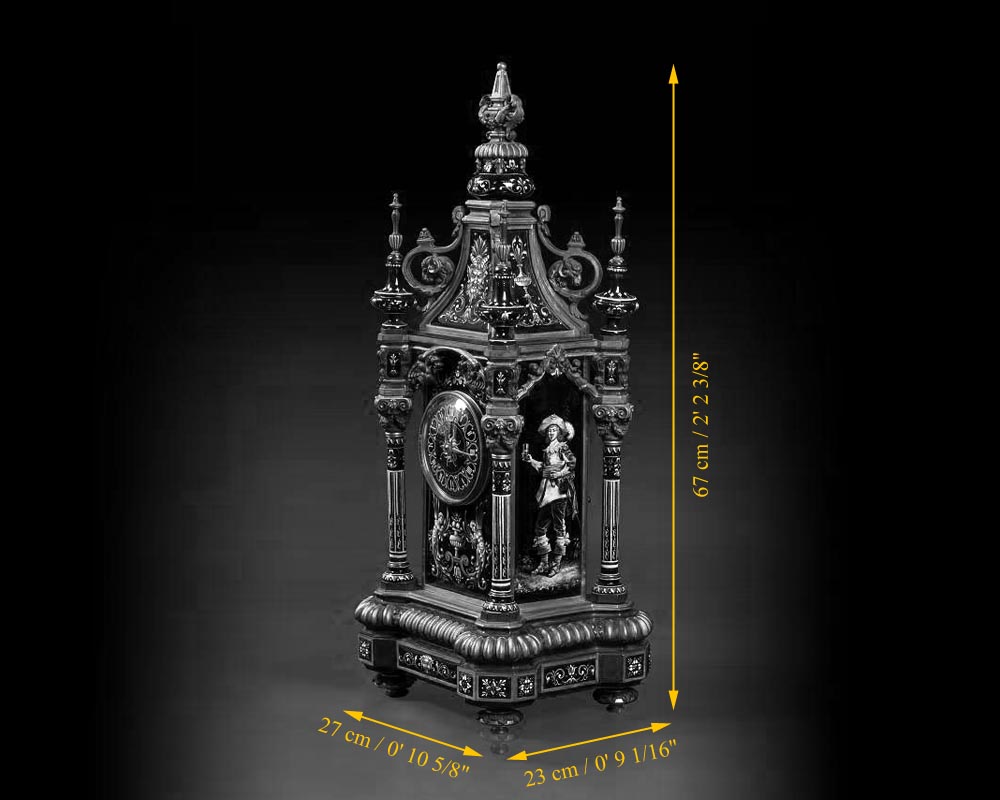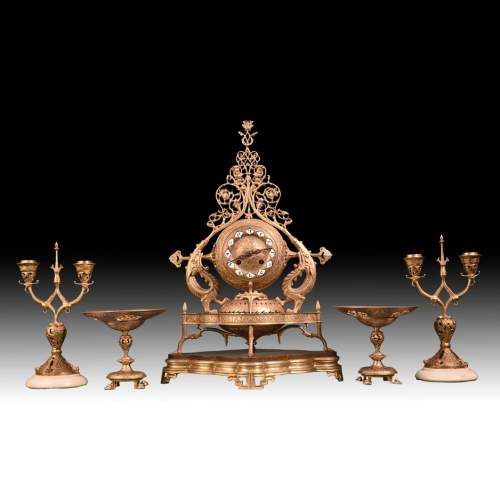Style Napoleon III / Ref.13949
Paul SOYER, Bronze, Gilded Bronze and Enameled Clock, circa 1860
Dimensions
Width 10'' ⅝ 27cm
Height 26'' ⅜ 67cm
Depth: 9'' 23cm
Origin:
France, circa 1860
This mantel clock is made in bronze and highly decorated with enamels painted in “grisaille”. Two patinas of bronze bring life and color to the frame, which - as was regularly the case for mid 19th century mantel clocks - is built like a miniature architectural Renaissance structure. The body has a square base, with columns on every corner that rise to composite order capitals, with a mixture of styles that is characteristic of 19th century art. The columns are linked together by gilded bronze round arches populated by Chimaera, mythological creatures. Above, the gilded bronzes are adorned with dark bronze ram heads, a motif borrowed from Antiquity and very popular in the 19th century, especially for furniture and decorative bronze pieces.
Enamel is everywhere, painted in grisaille and enhanced with gold, displaying a lush decor of foliage, grotesques and curlicue. Below the clock face, two tapered putti flank a vase brimming with fruit. The sides are adorned with full length portraits of a gentleman and a lady. The man is dressed in the style of the characters in Rembrandt’s The Night Watch, painted in 1642. The lady plays a mandolin, which was imported to France from Italy in the 15th century.
The Musée d’Orsay in Paris has recently acquired from Paul Soyer’s descendants an almost identical mantel clock to the one presented here. (OAO 1787) According to museum sources, this clock was presented at the World’s Fair in Philadelphia in 1876.
Born in the Seine-et-Marne region, Paul Soyer began his carreer as a chisel artist, in Paris, in the 1850’s. He progressively learned the art of enameling and opened his own studio in 1861, rue Mauconseil between the Halles and Bonne-Nouvelle neighborhoods. He collaborated with well know artists like Claudius Popelin, Charles Duron and Gustace Baugrand. Working with the latter, he was awarded a bronze medal at the World’s fair in 1867. He then opened a larger workshop Rue Saint Sauveur and specialized in different enamel techniques with a preference for painted enamels. His very varied production, went from small pieces for jewellery, enameled objects for goldsmiths, plates for cabinet makers, to large portraits. A follower of Popelin, he remained faithful to the art of the late Renaissance, with a preference for a polychrome enamel technique, which associated grisaille and gold camaïeu.
He participated in all the French and Foreign World’s Fairs, to the Union Centrale de Beaux-Arts appliqués à l’Industrie exhibits. Often rewarded, particularly with a gold medal in 1878, he was considered beyond competition and member of the jury in 1889, when he received the Légion d’Honneur.
Informations
Price: on request
Recommended for you :
Dimensions:
Width: 19
Height: 16
Depth: 10
Dimensions:
Width: 31
Height: 45
Depth: 21
Dimensions:
Width: 25
Height: 46
Depth: 16
Dimensions:
Width: 22
Height: 53
Depth: 19
Dimensions:
Width: 51
Height: 42
Depth: 20
Dimensions:
Width: 133
Height: 119
Depth: 25
Dimensions:
Width: 32
Height: 46
Depth: 17
Dimensions:
Width: 25
Height: 50
Depth: 18
Dimensions:
Width: 28
Height: 90
Diameter: 21
Dimensions:
Width: 41
Height: 38
Depth: 21
Dimensions:
Width: 43
Height: 62
Depth: 23
Dimensions:
Width: 31
Height: 56
Depth: 26



